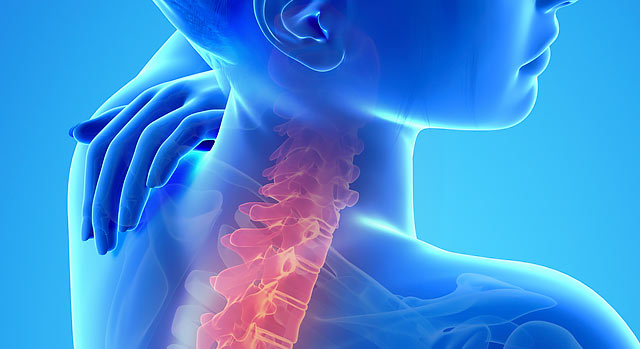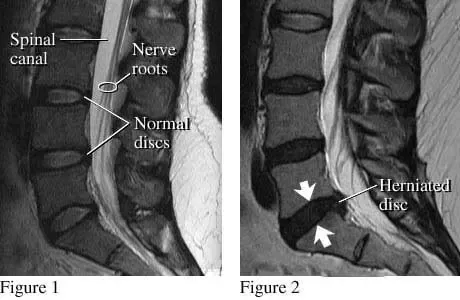Commonly Missed Orthopedic Injuries After a Car Accident
I often see patients after a car accident or other traumatic injury with complaints of neck and back pain. On many occasions, I will discover other associated injuries to the shoulder, wrist or other joints that were not previously diagnosed. Often, these other previously undiagnosed injuries are the main reason the patient is in continued pain. Why are these associated injuries not diagnosed earlier and what are the most common “missed” injuries? First let’s discuss why some injuries may not be diagnosed fully on the first visit.
The Initial Evaluation When a patient presents with neck pain after an accident, a full neurological and orthopedic exam of the neck and upper extremities should be performed by a qualified professional. This exam should include an examination of the shoulder, elbow, wrist and fingers for bruising, spasm, range of motion, numbness, weakness and any signs of nerve compression. Similarly, when examining the back, the exam should include the hips, knees, ankle and feet for bruising, spasm, numbness, weakness and range of motion. Reflexes should also be tested in the upper and lower extremities, including any abnormal or pathological reflexes that can indicate a spine injury. Without going into the specifics of an orthopedic and neurological examination of the neck and back, suffice it to say that the exam is both efficient and thorough so as to find all associated injuries.

Fractures Usually any injured body part is x-rayed to make sure there is no underlying fracture. Fractures are usually not easily diagnosed by examination alone. And fractures should not be missed. X-rays are important.
Why Are These Associated Injuries Not Diagnosed Earlier? Well first of all, if you don’t do the full examination you will miss things. Even if a patient is not complaining of pain in a certain area of the musculoskeletal system, it may turn out that there is an injury present found by examination. Another reason an injury may be missed is not taking the appropriate X-rays. A fracture is often not easy to diagnose without an X-ray.
But even in the circumstances where a complete examination is done and X-rays are done, there are still “missed” injuries. One of the main reasons for this is that when there is an acute injury to the neck or back from a traumatic accident, there is often a great deal of associated spasm of the neck and/or back muscles. This spasm is painful and makes it difficult for the patient to move and be fully examined. This is why the patient should be reexamined once the muscle spasm improves to find and document all injuries. A repeat exam is usually done within 2-4 weeks, at which time any resolution or improvement of symptoms can be documented. Typically, shoulder injuries fall into this category. Patients may complain of neck pain and spasm that runs from their spine to their shoulders. This can be just muscular, as the neck muscles do run from the spine to the shoulders and can mask an underlying shoulder injury (because patients may not want to move their shoulder much because of the pain and spasm). But once the spasm improves, a full examination of the shoulder may reveal a distinct shoulder problem. So re-examination of the patient is important. This is true for the shoulder and the other joints of the musculoskeletal system.
On re-examination, further tests can be ordered as needed, such as an MRI. MRI’s are better at showing soft tissue injuries than X-Rays and, when ordered at the appropriate time, can show additional injuries not initially diagnosed. For example, what was initially neck pain and spasm radiating into the shoulders may turn out to be a muscular rotator cuff injury that can be surgical after an MRI. Bottom line is a complete examination of the patient by a qualified physician initially and on follow-up is important to diagnose all the patients injuries and document the improvement or progression of the patient’s symptoms. In this way, the appropriate tests and treatment can be offered. And ultimately no injuries are missed.

What Are the Most Common “Missed” Injuries? When dealing with the neck pain, there is generally 4 causes of pain: 1. Muscular pain 2. Facet joint pain 3. Disk herniation pain 4. Shoulder pain
Usually, patients with neck pain after an accident are quickly treated for muscular neck pain with conservative care, such as physical therapy and chiropractic treatment. Low addiction potential medications, like muscle relaxants and anti-inflammatory medications are often prescribed. Generally patients also get MRI’s fairly quickly and disk herniations are quickly diagnosed if present.

Many times, disk herniations are not the cause of the patient’s pain in the neck and upper extremities. The diagnosis of a disk herniation and whether or not it is the cause of the pain would not be a missed injury because MRI’s are usually ordered so quickly. Learn more about Disk Herniation here!
Facet pain, or joint pain of the neck, on the other hand, is often overlooked. It is a common missed, or at least underdiagnosed, cause of neck pain. Facet pain is treated with injections and radiofrequency if persistent. Learn more about Facet Pain here!
As mentioned above, shoulder pain is a cause of neck pain and is sometimes missed and in my practice is one of the most common missed injuries.
Another common missed injury is a severe wrist sprain that is more than just a sprain. There are many bones in the wrist and they move together with wrist motion. The ligaments connecting these bones can be injured in an accident. Also there is cartilage in the wrist between the bones that can be injured too. These types of injuries are often subtle and can cause severe disability over time if missed. A complete orthopedic exam of the wrist is needed at the start, and an MRI if symptoms persist to evaluate for these types of injuries. Sometimes there is an occult fracture not seen well on X-ray of the scaphoid bone. The diagnosis can be made from an appropriate exam of the wrist and an MRI. This is not a common missed injury but if missed, the resulting disability can be great.
When dealing with the low back, the most common missed injuries are injuries to the sacroiliac joint and the hip joint. Both can cause one-sided low back pain and groin pain. A good examination of the hip joint and sacroiliac joint are needed. If sacroiliac joint pain is suspected, a sacroiliac joint injection can both help the pain and make the diagnosis. For hip pain with pain in the groin on physical exam of the hip an MRI is needed to make the diagnosis. The MRI often will include an arthrogram to evaluate for cartilage tears, such as labral tears that can be surgical problems.
How To Avoid Missed Orthopedic Injuries. There are certainly many other injuries that can be “missed” in a car accident or other trauma but I find the above-mentioned to be the most common. The way to avoid them is to be aware that they are common and look for them on examination and to examine the patient more than once, certainly if the symptoms do not improve with conservative care.
Most things improve with time. After a few weeks, most soft tissue symptoms from a trauma begin to improve. If symptoms do not improve, the physician should look further with another examination and diagnostic studies if appropriate. The goal is to get the patient better as soon as possible and prevent an injury from being missed and becoming chronic. Chronic injuries cause much greater disability and are much harder to treat successfully.
